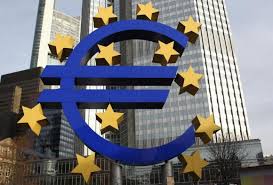The Eurozone is an economic and monetary union, which consists of 19 countries within the European Union, which in itself is a confederation of 28 nations primarily from Europe, forming an economic union. To know more about an economic and monetary union, go here : http://vskills.in/certification/blog/the-eurozone-as-an-economic-and-monetary-union/. The countries of the Eurozone (euro area) use a common currency called the Euro and share a common independent monetary policy which is presided over by the European Central Bank. Here are a few economic indicators of how the Eurozone has performed till 2010.
Unemployment level:
The average unemployment rate has fallen from 9.3 to 8.3 recorded in the time frame of 1998-99 and 1999-2008 respectively. Roughly 16 million jobs have been created in the last decade, being testimony to the surge in job growth. But the unemployment rate has risen sharply since the debt crisis. It was 10% in July 2010 and was last reported at 10.4% in December of 2011. From 1995 until 2010 the rate averaged 9.06 % in light of the global financial crisis and continues to scale new heights after the introduction of the euro due to the ongoing sovereign debt crisis.
|
Year |
Unemployment rate(% of total labour force) |
|
1991 |
6.50 |
|
1992 |
7.18 |
|
1993 |
8.97 |
|
1994 |
9.80 |
|
1995 |
9.43 |
|
1996 |
9.72 |
|
1997 |
9.78 |
|
1998 |
9.14 |
|
1999 |
8.53 |
|
2000 |
7.63 |
|
2001 |
6.96 |
|
2002 |
7.46 |
|
2003 |
7.81 |
|
2004 |
8.10 |
|
2005 |
8.08 |
|
2006 |
7.40 |
|
2007 |
6.60 |
|
2008 |
6.81 |
|
2009 |
9.24 |
Employment(y-o-y changes in %, period average)
The Euro area has outpaced job growth in mature economies like the US and Japan.
Source: World Bank
Government Debt:
The debt of the governments in the Euro area had been hovering around the same level of around 69% of their GDP before 2009, after which the debt to GDP ratio has shot up drastically. From 1999 until 2010, the Euro Area’s average government debt to GDP was 71.18 %.
Euro’s share in the world’s foreign exchange reserves:
The Euro has emerged as a major international currency. The share of the euro in global foreign exchange reserves has been rising since 1999 and stands at more than a quarter of all reserves today, making it the second most important currency behind the US dollar.
Interest Rates:
From 1998 until 2010 the Euro Area’s average interest rate was 2.89 %. Nominal long term interest rate (in %, period averages.) Thus reduction in interest rates can be seen in the euro area.
Click here for government certification in Accounting, Banking & Finance




5 Comments. Leave new
Well explained!
Great work..! you did well..!
Good with the stats.. Good effort..
Very well researched topic 😀 as the best stats were provided to support your views 😀
Even if the population is increased day by day 🙁 but good to know that new opportunity were also created 😀
And the stats well defined that very well 😀
Good work 😀
Informative 🙂 But now with our efficient and effective Prime Minister of India this problem is going to be solved.